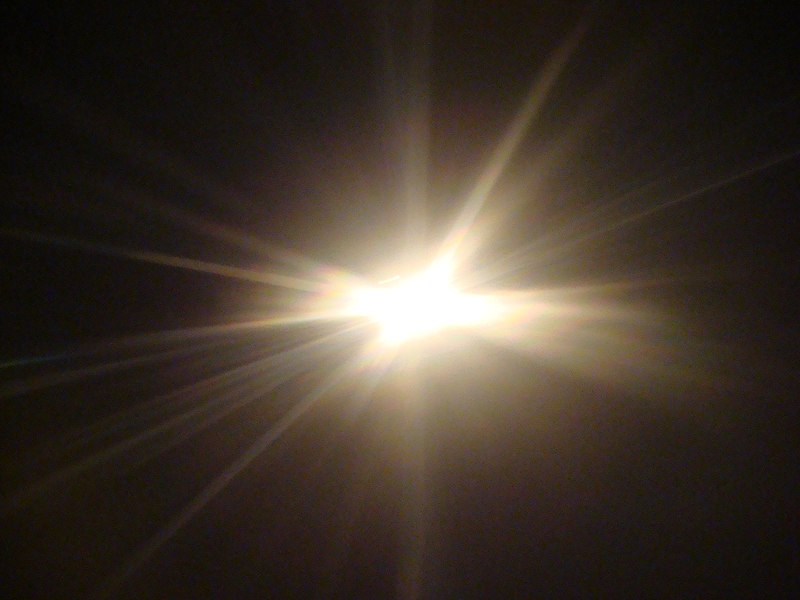Quantum Mechanics: The Ultraviolet Catastrophe
 |
| Zouavman Le Zouave / CC BY-SA (https://creativecommons.org/licenses/by-sa/3.0); https://commons.wikimedia.org/wiki/File:Light_shining1.JPG |
The Rayleigh-Jeans
law, based on classical physics, gives the spectral radiance (linked to
intensity) of blackbody electromagnetic radiation as a function of wavelength:
Bv(T)
is spectral radiance; kB is the Boltzmann constant; T is
temperature; c is the speed of light; λ is wavelength. [1]
Blackbodies
are defined as ‘[idealised] objects that perfectly absorb and then re-emit
radiation’ [2]. The equation shows that increasing the wavelength should
cause the spectral radiance of the emitted radiation to decrease and tend to
zero whilst decreasing wavelength causes it to increase, tending to infinity.
This graph [3]
shows what the Rayleigh-Jeans law predicts (labelled ‘Classical theory’) and
what actually happens at different temperatures (the blue, green and red
lines). Although the law seems to coincide with experimental data at higher
wavelengths, they contrast significantly at lower wavelengths. Evidence reveals
that at low wavelengths (high frequencies), spectral radiance decreases. This problem
is known as the ultraviolet catastrophe, simply because the disparity between
the law and experiments becomes most apparent in the ultraviolet frequency
range and beyond.
The issue
with the formula is the underlying classical physics. Rayleigh and Jeans incorporated
the Equipartition theorem of classical statistical mechanics which states that
at equilibrium, ‘energy is evenly spread between all possible energy states.’ [4]
In classical physics, particles can vibrate with any amount of energy. This meant that there can be infinitely many energy states as you can continuously divide their value: there is no smallest energy. When trying to mathematically redistribute heat energy between these energy states, 'way too much energy got packed into the countless very tiny energy states at high frequencies.' [4] This caused the spectral radiance at high frequencies to tend to infinity.
In order to
solve this major problem, German physicist, Max Planck, used a mathematical
trick: he suggested that the energy of the oscillators should be quantised. This
means that energy can only be emitted and absorbed in discrete packets known as
‘quanta.’ The energy of these quanta is determined by the equation: E = hf
where E is energy, h is Planck’s constant and f is the frequency of the
oscillations. With this move, Planck solved the ultraviolet catastrophe as it limited the amount of energy that could be contained within the high frequency vibrations.
By solving
the ultraviolet catastrophe, Planck sparked the quantum revolution. Later on,
Einstein posited that these ‘quanta’ were real physical entities leading to the
hypothesis of photons.
Sources:
2. The
Quantum Universe by Brian Cox and Jeff Forshaw


Comments
Post a Comment